Washington’s Central Asia strategy received a serious blow with the Afghanistan defeat. The U.S. was not only forced to leave Afghanistan. Pakistan and the Central Asian countries rejected its demands for new military bases to relocate troops there. Thus, the U.S. found itself in a situation of leaving the region altogether.
Still, control of Central Asian energy sources and transport routes is a must for the US project of a unipolar world. For that purpose, the U.S. had to force countries such as Russia, China, Iran and Turkey – countries with a grand state tradition, strong military and huge economical potential – to kneel down in front of Washington. And this strategy was only possible by establishing its own governance in the republics of the former USSR and encircling the named countries.
The project has been set in motion after the dissolution of the USSR in the 1990s. Then-Turkish Prime Minister Tansu Çiller’s Gladio apparatus and its coup attempt in Azerbaijan; the plan to assassinate Karimov in Uzbekistan using the Fethullah Gülen elements placed in Central Asian countries; the support for reactionary terror groups in Central Asia; all these actions were part of that plan. In the 2000s then, colored revolutions took the scene.
But as mentioned above, this dream has ended with the defeat in Afghanistan. The dream has ended, but the ambitions of the U.S. have not finished.
A second front against Russia
The gates of Central Asia are being pushed one the one side from the Eastern Mediterranean and the Middle East, and on the other from East Europe, the Black Sea and Ukraine. They have not been able to crack the gate of Belarus. But a new move is in preparation in the Ukraine. Everyone knows by now that this step is scheduled for the first months of 2022. Different war scenarios are being discussed, including provocations and nuclear warfare.
The protests in Kazakhstan have erupted right in the middle of this circumstances. This move in Kazakhstan has two aspects: The US attempt to return to Central Asia after the Afghanistan defeat, and the opening of a second front against Russia simultaneously to the Ukraine crisis. Now, Russia’s energy and attention is divided into two fronts. This situation provides a better ground for the steps the U.S. is going to take in the Ukraine.
A blow to the “Belt and Road”
But the new front is not opened only against Russia. An attempted encirclement of China over the issues of the South China Sea, Taiwan, the Uighur policy and AUKUS has already been in progress. The events in Kazakhstan are now adding to this list of targeting China. This is not just a geopolitical targeting. With railways and harbors, Kazakhstan plays an important role within the “Belt and Road” initiative proposed by China. Any success in breaking Kazakhstan away from this chain or at least causing ongoing domestic disturbances would also deal a huge blow to the Belt and Road.
Turkey and the Turkic World are also being targeted
This provocation in Kazakhstan obviously and openly targets Turkey and the Turkic world as well. The false ideology of Turkism, established under Amerigan guidance in the 1990s with the purpose to use the Turkic republics against Russia and China, has not succeeded. More importantly, Turkey has broken away from the Atlantic camp. With its recent Istanbul Summit, the Organization of Turkic States has clearly demonstrated its will to become a part of Eurasian integration. Binali Yıldırım, given the status of “wise old man” in the organization, has confirmed this by stating, “Russia and China are natural members of this organization”.
Now, the U.S. is targeting the Organization of Turkic States too. After the liberation of Karabakh, this mechanism can become a motor of Eurasia’s economic, political and cultural fusion. And it can achieve this even without excluding any country of the region, including Armenia.
Just image for a moment the opening of the Zangezur Corridor. This will lot only connect the mainland of Azerbaijan with Nakhchivan. Via this corridor, Turkey will unite with Azerbaijan and via the Caspian Sea with Central Asia. The fact that the U.S. tries its chaos plan, which failed in Afghanistan, currently on the territory of Kazakhstan aims to disrupt this connection as well.
Let us also remember the train that departed from Turkey exporting goods to China. Can that train pass trough Kazakhstan, if the country’s airports are occupied, if its government offices are plundered, if its streets are filled with gangs carrying automatic rifles?
For that reason, the US provocation of colored revolution in Kazakhstan also targets Turkey and the Turkic world. Moreover, if successful in Kazakhstan, the probability of this provocations spreading to other Turkic republics rises. Nıt surprisingly, the Bidenist opposition in Turkey has already started to present the events in Kazakhstan as a model for Turkey.
Kazakhstan as the common denominator of Eurasian initiatives
Within thin general tableau, Kazakhstan has great importance. The country is at the same time member of the Turkic Organization of States, the Collective Security Treaty Organization (CSTO), the Eurasian Economic Union (EEU) and the Shanghai Cooperation Organization. Kazakhstan is a common denominator for all Eurasian initiatives of regional integration.
If Kazakhstan is taken out of this system of cooperation, the whole system will be interrupted heavily. Such a step would sabotage the integration of process of the Turkic world as well as the process of the Turkic world entering into cooperation with the wider Eurasian geography. Kazakhstan is both: a main pillar of the Turkic world and a bridge between this world and Russian and China.
There is no doubt that Nursultan Nazarbayev had a very important role in this important mission of Kazakhstan. Nazarbayev was one of the leading politicians – both in theory and in practice – for the unification of the Turkic world with Eurasia. It is not without reason that protests attacked the statutes of Nazarbayev.
Kazakhstan’s riches and resources both below and above the earth need also be mentioned when discussing why the country has become a target. When I visited Kazakhstan, I was informed that out of the elements listed in the periodic table we know from school, all except one were to be found in the country.
All these facts show clearly that Kazakhstan has been chosen as target for reason. A direct shot at point.
Lesson 1: compromising with the U.S. does not protect from Washington’s anger
Besides of these assessments, Turkey and all other countries that are targeted by the U.S. need to draw two important lessons from the events in Kazakhstan.
Nazarbayev was a true representative of the Eurasian mission. His priority was always regional initiatives. But his successor Tokayev has – in the name of a “policy of balance” and a “multidimensional policy” – put forward relations with the U.S. He signed military agreements with the Pentagon, including Washington into the military education of the Kazakh army. In this process, US-funded NGOS and foundations of George Soros, which constitute the social pillar of US-supported colored revolutions, have raised influence in the country.
This influential work within the Kazakh state labeled as ‘cooperation’, has weakened the country’s reflexes against foreign threats and created serious inabilities that became obvious in the recent events.
Further details on how the U.S. prepared a coup are explained in a warning article published two years ago here.
As a result, attempts to achieve a compromise with the U.S. and thus escape Washington’s pressure within the so-called “multidimensional policy” have not achieved any success. Quite the contrary, have these policies strengthened the US hand, undermined the government’s authority and caused the emergence of different fractions within the state. The fact that Tokayev reacted to the protests by cleaning up state institutions beginning with the intelligence service clearly demonstrates this weakness. The society on the other side had become ready to be influenced and led by NGOs and foundations.
Another aspect worth being noted is the insufficient elimination of Fethullah Gülen Terror Organization’s (FETO) existence in Kazakhstan. Russian authorities have highlighted FETO’s role in the protests.
Thus, the Kazakhstan events teach that it is not possible to escape Washington’s wrath by cooperation or compromising with it. Every loop hole that emerges within that cooperation allows the penetration of foreign forces into the system. There is no other solution than the clear rejection of the U.S. and its tools within the country and the simultaneous constructions of according international alliances.
Lesson 2: Public economy is the assurance for national security
The second lesson concerns economic policies. The world goes through an economic crisis due to the bankruptcy of the neoliberal system and the pandemic. Policies that place all the burden of the crisis on the people create the ground for foreign forces to organize the people’s reaction to it. The people express their justifies reaction, but by doing so in that context, they are forced to use actions that will worsen their situation extremely. Thus, the problems which the people have faced and which caused their reaction, demanding a solution, become even worse and almost unsolvable.
Therefore, public economy is not only the way to achieve welfare for the people and a healthy society; it is also the assurance of national security.
Although late, Tokayev had to face this truth, and he started installing the necessary measures. But Kazakhstan is forced to pay a high price for this delay.
Do the actions have any chance to succeed?
Another question is whether these actions have any chance of success. However well they may be prepared by outside forces, these street protests and actions maintain their uncontrolled, undirected and anarchic nature, thus having no chance to topple down the government. As long as they are not supported by an armed group from within the state apparatus. Has the U.S been able to create a junta within the armed forces loyal to it in the past times? A weakness in the security apparatus is obvious, but there is no force on the horizon that may lay hands on the power favoring US interests and using the chaotic circumstances as a pretext. At the same time, the chaotic situation itself benefits the U.S.
A Russian occupation?
Upon Tokayev’s call, the CSTO has become active. This will also be important in suppressing the colored revolution movement. It is worth emphasizing that Kazakhstan is not only member of the CSTO but one of its founders, which also for time had the chairmanship. The organization’s principle is that, when a member faces an external aggression, the other member states are obliged to provide the concerning country protective support. Therefore, Kazakhstan has activated its rights within the treaty when facing the events escaping control.
In this context, the warning of Abzal Saparbekuly, Kazakhstan’s ambassador in Turkey is worth mentioning. The ambassador warned against the propaganda of a Russian occupation via the CSTO assistance. Mentioning that an important part of the Kazakh population has Russian origins, he warned that making use of an anti-Russian atmosphere, the protesters might want to create a Kazakh-Russian conflict. He asked to refrain from such a discourse that is not based on any reality.
In Kazakhstan, Eurasia and the Atlantic are facing off
The events in Kazakhstan are the result of the global conflict we have been describing since the beginning of this article. To put it more clearly, they constitute a move by those who desire a unipolar world against the already emerging multipolarity. This confrontation is also very visible in the reactions to the incidents in Kazakhstan. Turkey, Russia, China, the Organization of Turkic States, Iran, Syria, Pakistan and Belarus, to name the most important actors in the Eurasian Front, have clearly condemned the uprising. The Atlantic Front on the other side, with all its pawns from the PKK to Saakashvili in Georgia, is siding with the colored revolution.
It is very obvious: From Turkey to China, from Russia to Azerbaijan, all Eurasian countries have a common interest in Kazakhstan. The relation among them is not determined by competition but by a joint destiny and the ground for cooperation that inevitably will be realized.
Cooperation of the Organization of Turkic States and the Collective Security Treaty Organization
Here, the role of Turkey and Russia is very important. The Astana Process, the 3+2 Platform in the Southern Caucasus have both provided examples that, when the regional initiative prevails and foreign interventions are prevented, there is no problem that countries cannot solve. Peace and stability in the region without doubt benefits the regional countries. The Atlantic Front on the other side can only create means on interference and intervention by disrupting peace and stability and creating a situation of chaos. Now is the time to provide peace, stability and tranquility in Kazakhstan.
In this sense, coordination between the Organization of Turkic States as a political-cultural institution and the Collective Security Treaty Organization as a security institution will play a constructive role. There are many points where the two can complement each other.
Today, there is no force that can save the US project of a unipolar world. Multipolarity is today’s reality. When departing from this assumption, there is not problem in our region that cannot be solved. Just brave and decided steps are necessary to make the regional initiative determining in all matters of conflict.


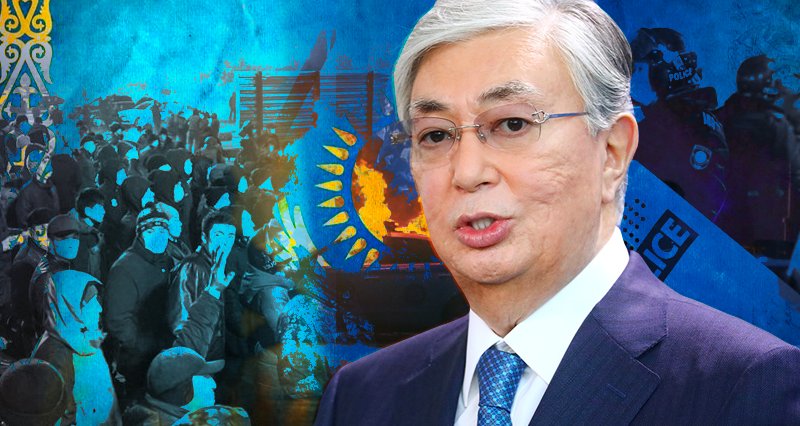

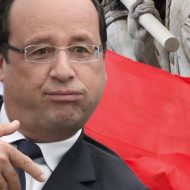
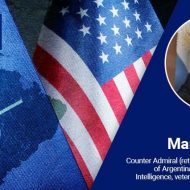
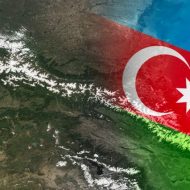
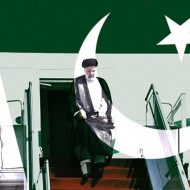
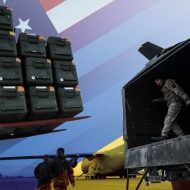
Leave a Reply